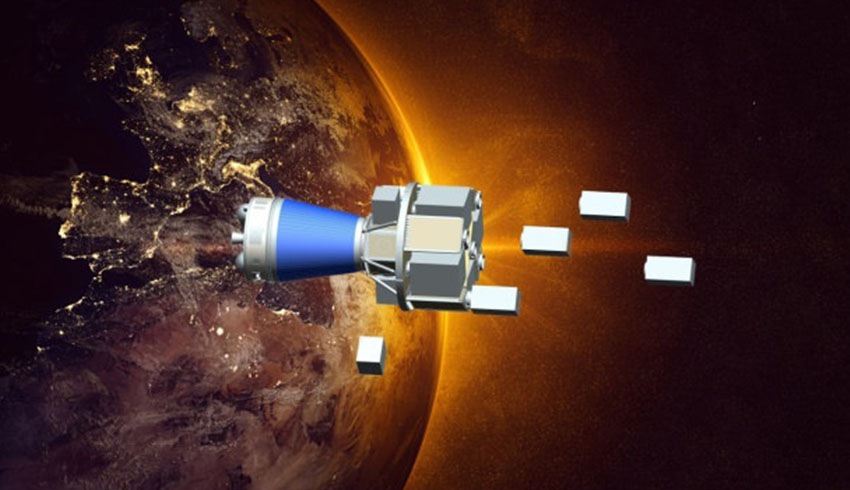
Up until now, the smallest classes of satellites – all the way down to tiny CubeSats, built from 10 cubic centimetre modular boxes – have typically ‘piggybacked’ to orbit. They have to make use of any spare capacity as a single large satellite is launched, meaning their overall launch opportunities are limited.
Giorgio Tumino, manager of ESA’s Vega development programs, commented, "The new Vega Small Spacecraft Mission Service (SSMS) switches this into a ‘ride-share’ model, with multiple small satellites being flown together, splitting the launch cost through economy class tickets."
The inaugural ‘proof of concept’ flight of Vega’s SSMS dispenser will take place this September, with 41 separate passengers: seven small satellites plus 35 CubeSats in all. Included in that total are a trio of ESA CubeSats:
- The SIMBA mission studying Earth’s radiation budget; and
- The ozone-measuring Picasso and PhiSat, investigating the application of artificial intelligence to Earth observation.
"Our development of this new SSMS dispenser – able to group together different satellites from one kilogram to 400 kilograms in mass – is a response to the market for these small- and micro-satellite missions, which has grown exponentially in recent years," Tumino added.
In a first for any ESA launcher, part of the payload integration takes place in Europe, streamlining the cost and effort required by lean small satellite companies. Satellites are placed onto the lower part of the SSMS by its manufacturer, SAB Aerospace in the Czech Republic, with the top-level satellites added at Europe’s Spaceport in Kourou, French Guiana ahead of launch.
This inaugural flight will deliver all its passengers to the same 550-kilometre altitude ‘sun synchronous orbit’, remaining lined up with the sun for optimal Earth observing conditions. But in future, Vega could deliver satellites to three separate orbits per SSMS flight.
Once its target orbit is achieved the SSMS, controlled through the avionics systems in Vega’s Attitude & Vernier Upper Module (AVUM) upper stage, will deploy its satellites in co-ordinated fashion, with carefully planned delays in between each separation. In a matter of minutes they will all be pushed away smoothly using springs.
When deployment is completed, the AVUM will de-orbit itself and its SSMS dispenser, fulfilling stringent international space debris regulations governing low-Earth orbit.
The three-stage solid propellant Vega launcher with a liquid-fuelled re-ignitable AVUM upper stage has been flying since 2012. Its SSMS dispenser is only one of a range of current developments to allow Vega to respond to the full portfolio of market needs.
"We aim to affordably fly everything from a 1one-kilogram CubeSat all the way up to a 2.3-tonne satellite, with still greater capacity on the way through our Vega Evolution program," Tumino added.
Receive the latest developments and updates on Australia’s space industry direct to your inbox. Subscribe today to Space Connect here.











